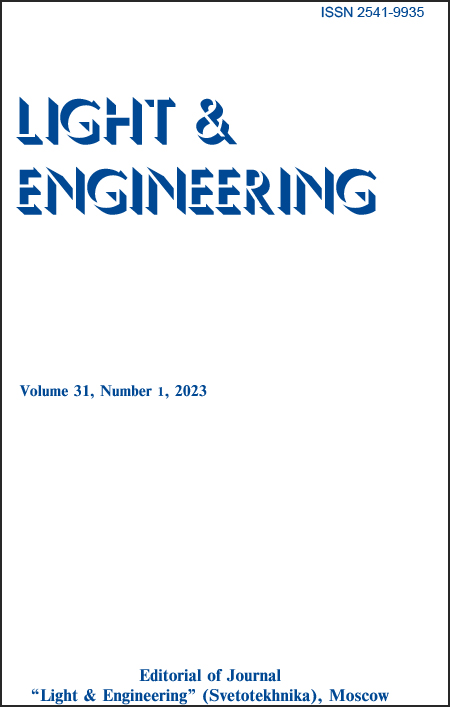Content

Abstract:
Exhibition lighting is one of the most important subjects in terms of forming of an image of the entire museum as well as of perception of particular exhibits. This article reviews aspects of art museum lighting, presents examples of interaction of light and fine art pieces, and gives a perspective on possible methods of picture lighting accounting for nuances of the subject and the state of a painting. We will try to describe the main aspects and principles of work with paintings.
References:
1. Apollo: Fine and Decorative Arts. Architecture: Terminological Dictionary: A–Z [Apollon: Izobrazitelnoye i dekorativnoye iskusstvo. Arkhitektura: Terminologicheskiy slovar: A–Ya] / Russian Academy of Arts, Fine Arts Theory and History Research Institute; V.G. Arslanov et al. – Moscow: Ellis Lak, 1997, 735 p. 2. Goethe and Newton: Dispute on Colour [Goethe i Newton: spor o tsvete] // Intellectual Traditions in the Past and in the Present [Intellektualnyie traditsii v proshlom i nastoyashchem] /Moscow, Akvilon, 2014, Vol. 2,339 p. 3. Hodge, Susie. The Short Story of Art. A Pocket Guide to Key Movements, Works, Themes & Techniques [Glavnoye v istorii iskusstv. Klyuchevyie raboty, temy, napravleniya, tekhniki] / Trans. from Eng. by E. Dubrovskaya, Moscow: Mann, Ivanov & Ferber, 2018, 224 p. 4. Arnheim, R. Art and visual perception // Arkhitektura-S, 2012, 392 p. 5. Wipper, B.R. Introduction to the History of Arts [Vvedeniye v istoricheskoye izucheniye iskusstva] / Izobrazitelnoye iskusstvo, 2015, 368 p. 6. Rauschenbach, B.V. Geometry of a Painting and Visual Perception [Geometriya kartiny i zritelnoye vospriyatiye] / RUGRAM_Palmira, 2022, 315 p. 7. IES TM‑30–15. IES Method for Evaluating Light Source Colour Rendition/ Illuminating Engineering Society of North Amerika, 2015. 8. Aurelien, D. Understanding TM‑30’s Information March 2016.
Keywords
- pictorial art
- lighting
- tenebrous
- chiaroscuro
- artistic image
- expressive means
- light source
- lighting ethics
Recommended articles

